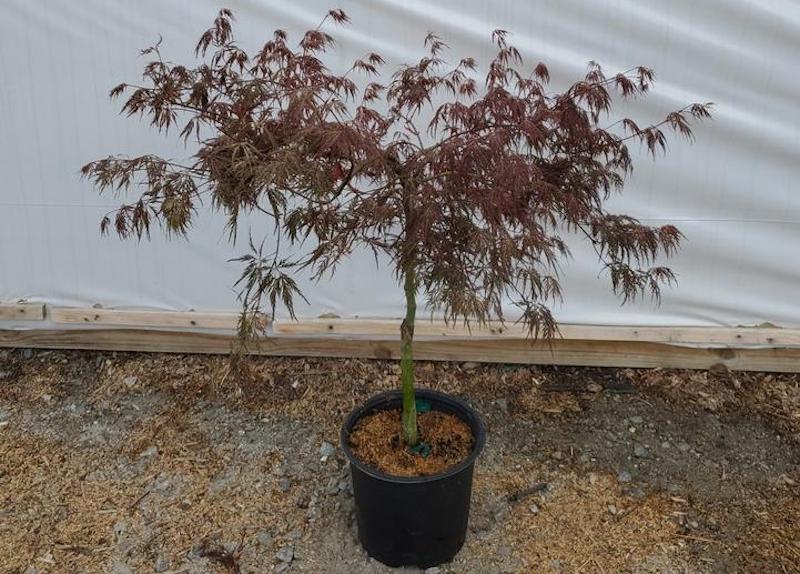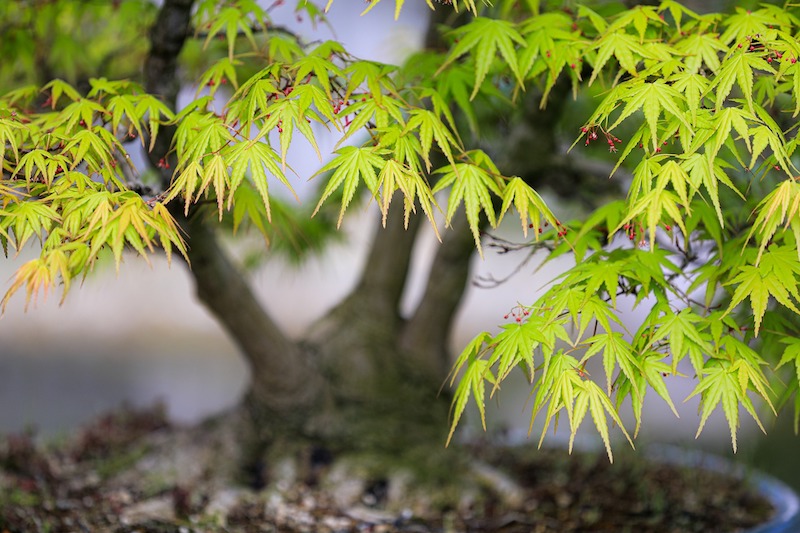Japanese maples are one of the best trees to grow in pots. Known as Acer palmatum, these trees are planted for their versatility and variety of leaves, colors, and forms. While all Japanese maples can be successfully grown in containers, dwarf and slow-growing varieties are the perfect fit. Many cultivars of Japanese maples grow and spread to just 2-10 feet and can be easily planted and maintained in containers. Growing Japanese maples in pots is ideal for tight spaces, patios, and balcony gardens.

Planting Japanese Maples in Pots
The best time of the year to plant Japanese maples in containers is in spring, which gives them ample time to grow before winter. Choose a container that is about twice the size of the tree’s root ball, and deep enough for the root collar (where the trunk meets the roots) to rest above the soil. The pot should be made of heavy material to prevent top-heaviness and to prevent the tree from toppling over in high winds. Fiberglass or concrete pots are an excellent choice for Japanese maples since they are sturdy and more durable over winter than clay or terracotta pots. The pot needs to have adequate drainage holes; if none are present, they will need to be drilled in. Place potted Japanese maples in a location that receives morning sun and afternoon shade.
Best Soil For Japanese Maples in Pots
Japanese maples require well-drained soil with a slightly acidic to neutral pH. For best results, plant these trees in a blend of peat, orchid bark, and perlite or pumice. Use 2 parts each of peat and orchid bark for the base of the mix, and add 1 part perlite or pumice to provide plenty of aeration to the soil. Avoid using your native ground soil, as this can be heavy and full of clay particles, which can become waterlogged in pots. Similarly, do not add rocks to the bottom of the pot – this increases the water table in the container and can lead to root rot.

Caring For Japanese Maples in Planters
Japanese maples grow nicely in planters and can even be grown as bonsai. These trees grow best when planted alone in containers, as planting additional plants with them can disturb the roots and restrict growth.
Watering Japanese Maples in Pots
Potted Japanese maples will need to be watered more often than Japanese maples grown in the ground due to the reduced water-holding capacity of potting soils and containers. Depending on temperature and precipitation levels, plan on watering your potted Japanese maple about 3-4 times per week. The sunnier the location, the more often it will need to be watered. Give your Japanese maple water during drought periods and whenever the soil feels dry. Japanese maples in containers should be watered until the soil is evenly moist. Immediately empty any water that collects in the drainage tray.
Fertilizing Japanese Maples in Pots
Container-grown Japanese maples benefit from yearly fertilization to maintain healthy growth. Fertilize your potted Japanese maple once per year in early spring. Use a slow-release, granular fertilizer formulated for trees. Make sure the soil is moist and water well after fertilizing. Avoid fertilizing in summer or fall, as this can cause late bursts of thin, weak growth that are susceptible to winter damage.
Winter Care For Japanese Maples in Pots
Japanese maples are cold hardy to USDA zones 5-9, but if you are growing them in containers, it is better to treat them like they are hardy to zones 6-9. The tree’s roots are more exposed to cold air in a pot and are sensitive to the freeze-thaw cycle of winter. Move your potted Japanese maple to a sheltered, unheated location, such as a garage, shed, or porch during winter. Supplemental lighting may be needed if the Japanese maple starts leafing out early. If you are unable to move the tree, wrap the sides of the pot with several layers of burlap, and apply 2-3 inches of mulch above the roots, avoiding contact with the tree’s trunk.

Growing Japanese Maples Indoors
Japanese maples are native to temperate regions where they undergo a period of dormancy over winter. If you are growing Japanese maples indoors, make sure they receive a cold period throughout winter by placing them in a cool, sheltered location. For the rest of the year, keep your Japanese maples in a location that receives bright indirect light.
 |
Lauren Youngcourt - Published 05-02-2023 |
